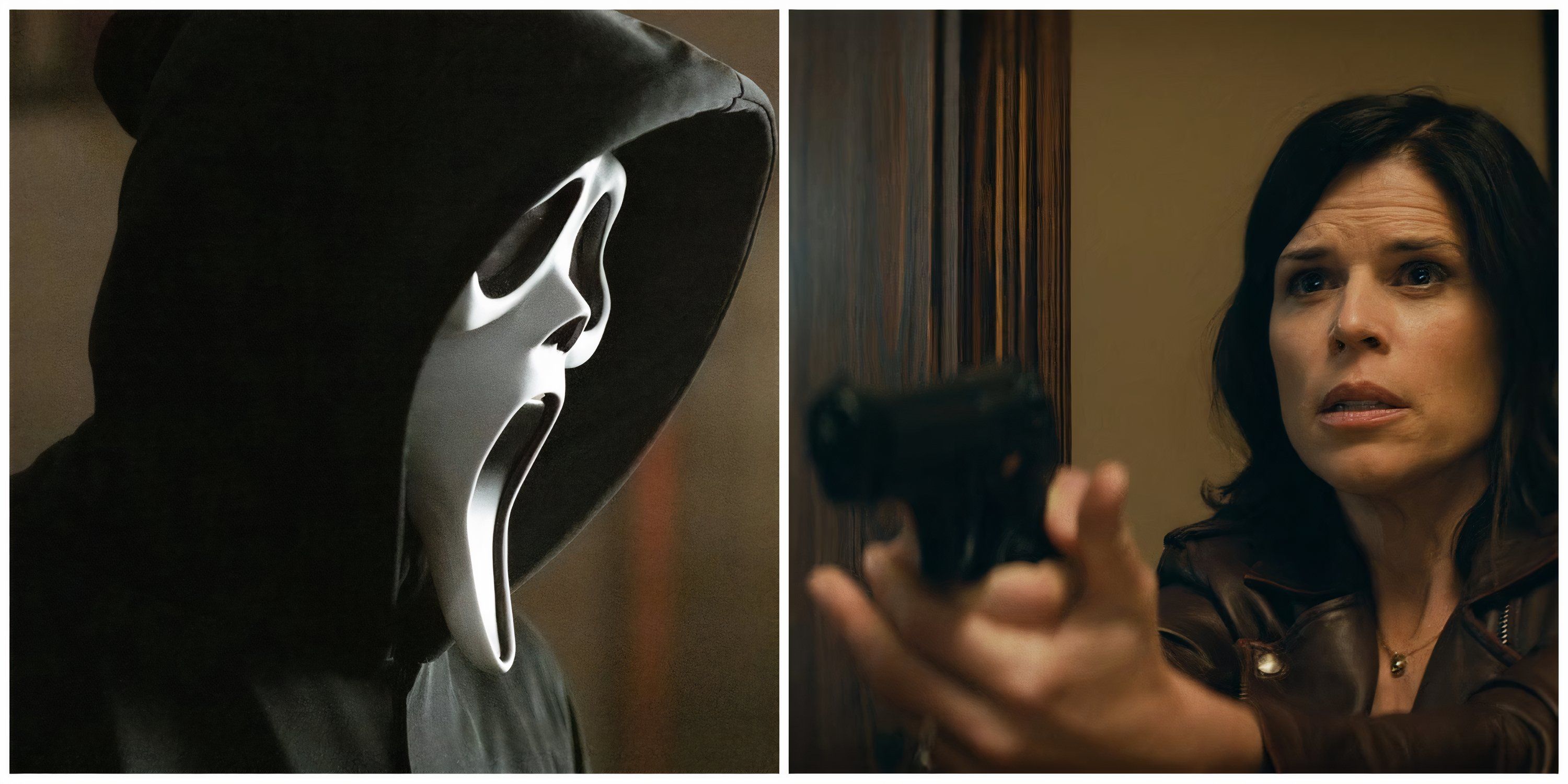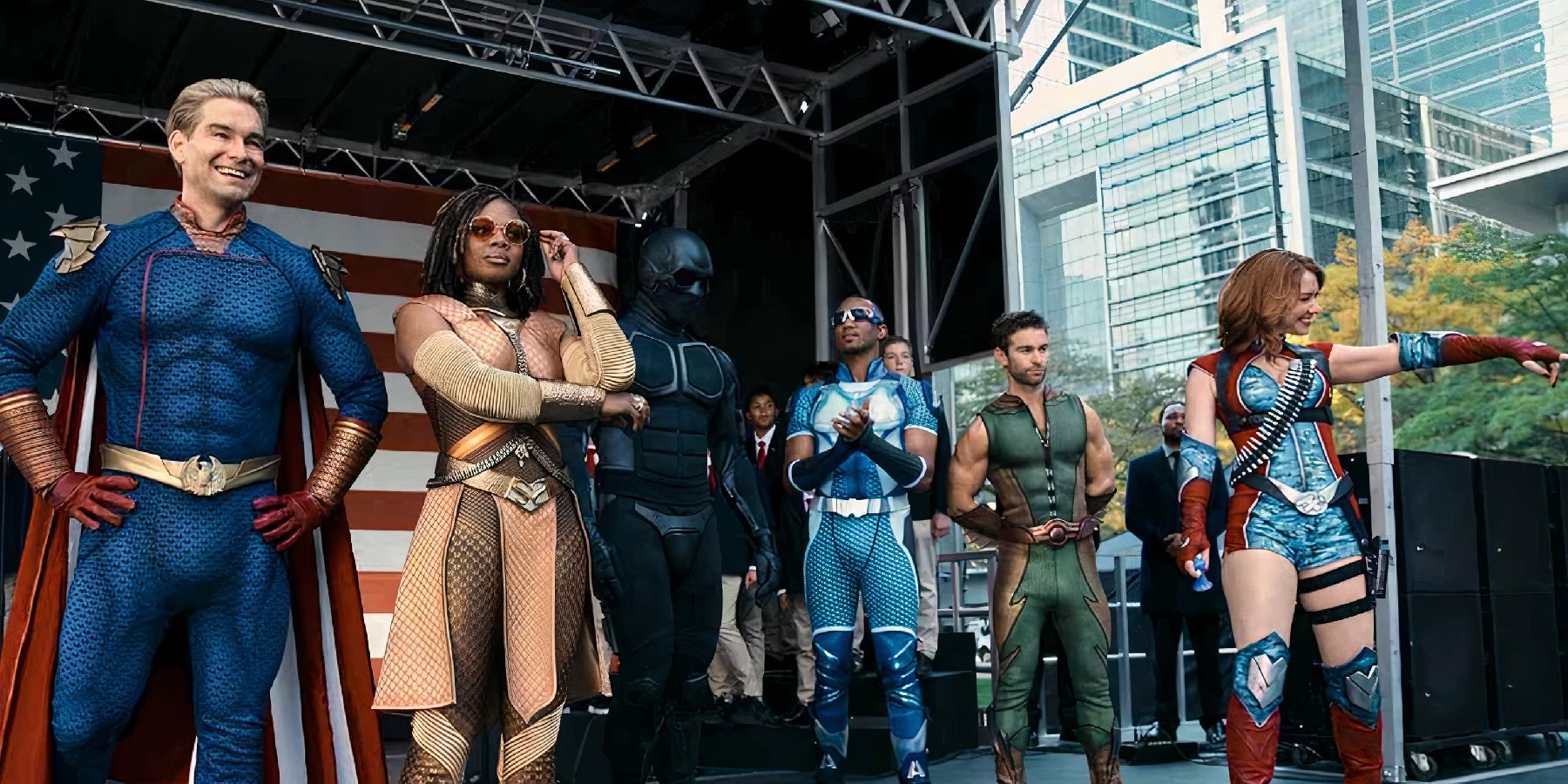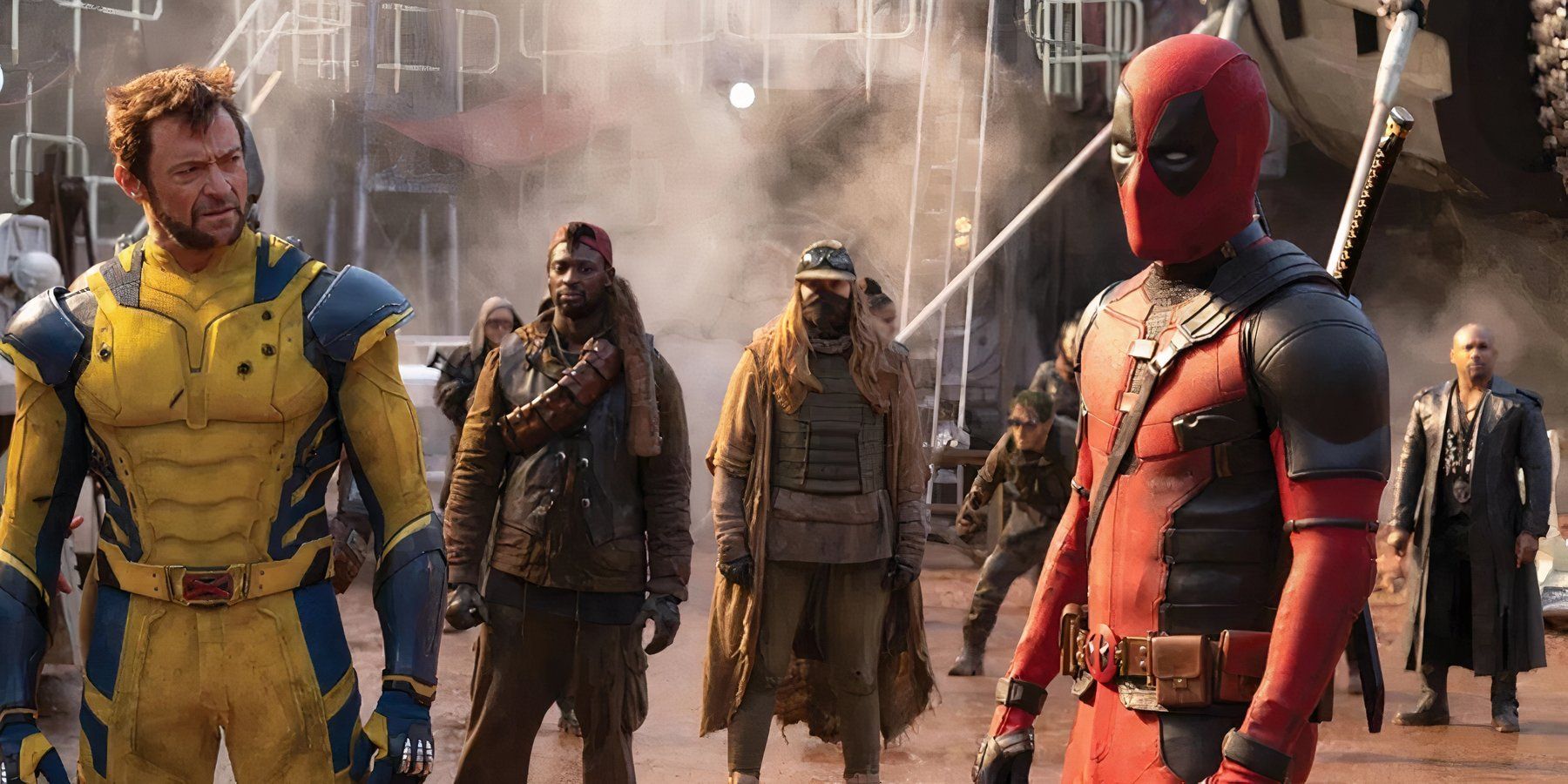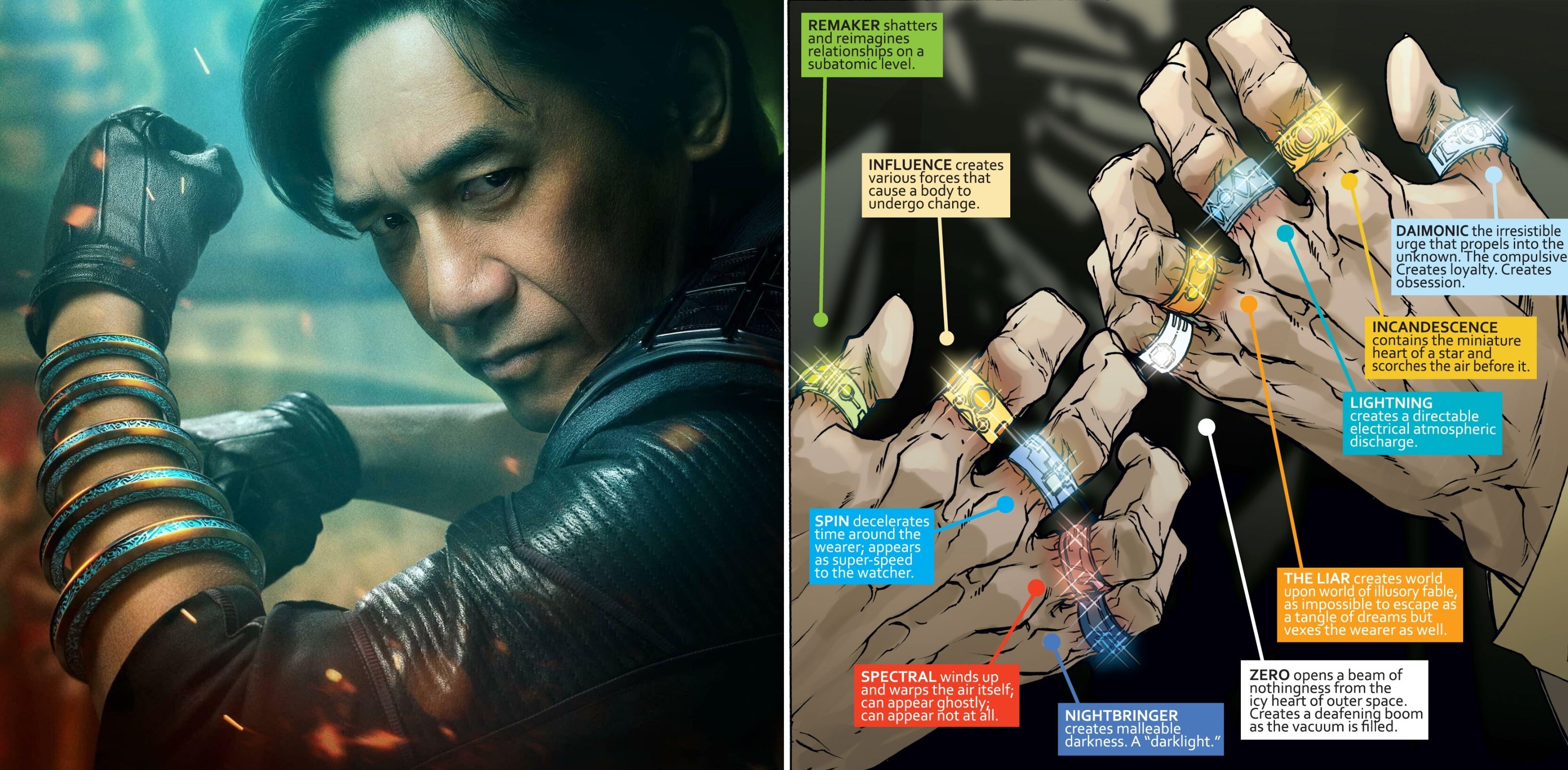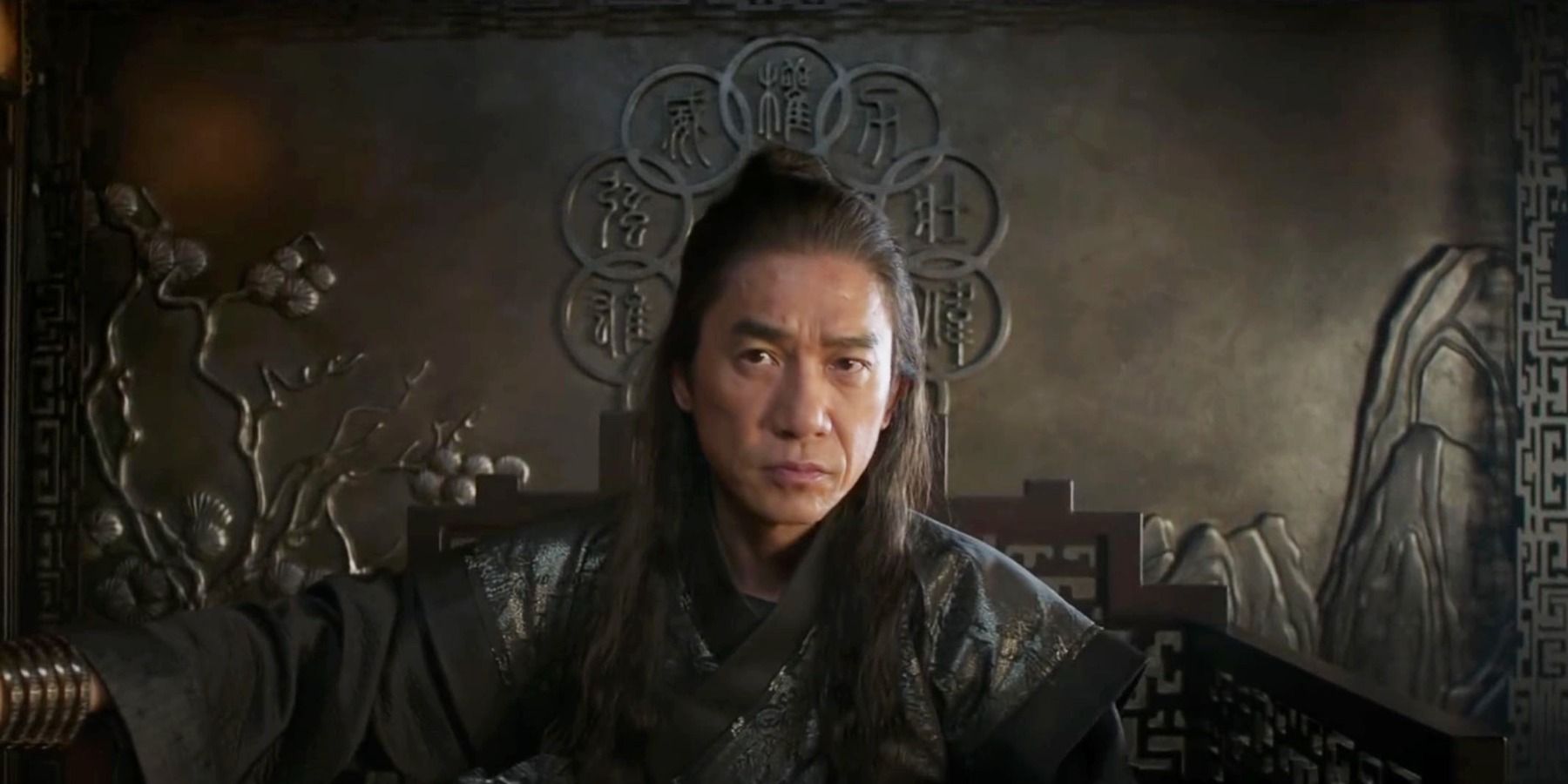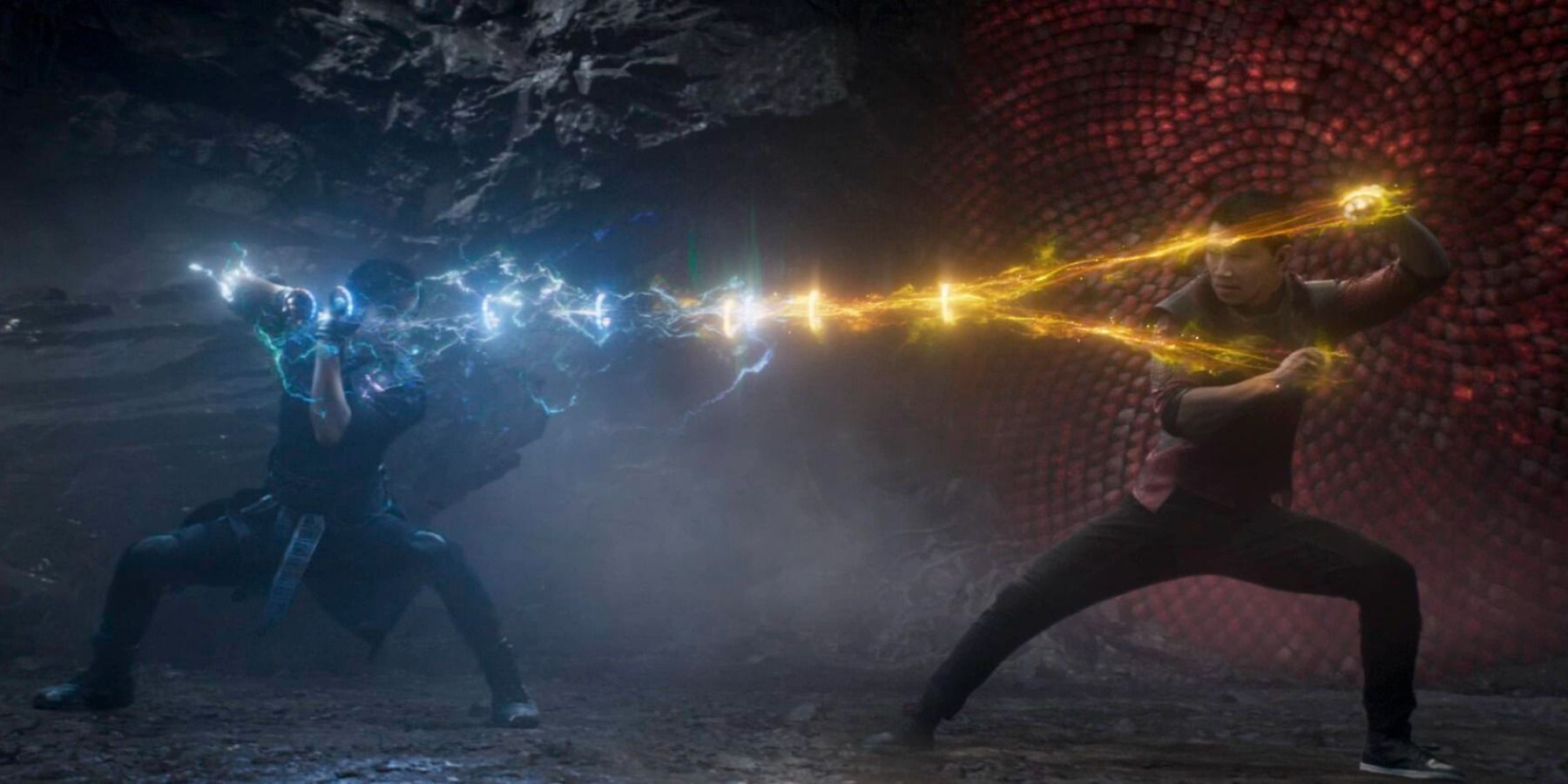The Marvel Cinematic Universe has introduced no shortage of powerful weapons and mystical macguffins over the course of its 13-years-and-counting run. And the latest entry in the MCU, Shang-Chi and the Legend of the Ten Rings, has just added to that list by introducing another set of iconic artifacts that comic fans are sure to find familiar.
The weapons in question are, of course, the film’s titular Ten Rings — not the criminal organization led by Shang-Chi’s father Xu Wenwu, but rather the literal rings he wears on his arms, serving as the group’s namesake. These trademark rings mark Wenwu as the MCU’s true adaptation of the Mandarin: the villain who once seemed to make his film debut in Iron Man 3 played by Ben Kingsley, only to be revealed as an impostor. But Wenwu (portrayed by Tony Leung) is very much the real deal, and he has the rings to prove it.
The Mandarin’s rings have been practically synonymous with the character since his debut in Tales of Suspense #50, all the way back in 1964. In both the comics and in the MCU, the rings are the source of his superhuman abilities, granting him the power he needs to carve out his criminal empire. But believe it or not, that’s about where the similarities end between these two incarnations of the Mandarin’s signature weapons. The Ten Rings have been completely reimagined for the MCU, bearing hardly any resemblance to their comic counterparts in the original source material.
In the Marvel Universe of the comics, the Mandarin has ten rings — one on each finger — that all have their own unique appearance, even if said appearance varies depending on which artist is depicting them. But more importantly, each of the ten rings possesses a distinct power, as well as a name that symbolizes its special ability. This is a far cry from Wenwu’s rings, which are shaped more like large bands worn around the arms, similar to the iron rings used for training in some styles of Shaolin Kung Fu like Hung Gar. Moreover, the MCU’s rings are completely uniform in their appearance and abilities.
On his right hand, the comic book Mandarin’s rings are as follows: first is Remaker, which can transmute and rearrange matter. Second is Influence, which fires blasts of concussive energy, then Spin, which manipulates air to attack opponents or allow for levitation. Spectral fires a disintegration beam that can destroy any object, but requires 20 minutes to recharge after use. Nightbringer creates a “darklight,” casting the area around Mandarin in complete darkness.
As for the rings on his left hand, Daimonic can control electromagnetic energy — a power usually used to either create bursts of blinding light or create holograms. Incandescence generates blasts of fire, while The Liar can control minds and create illusions. Finally, Lightning fires bolts of electricity, and Zero commands ice. Needless to say, the Mandarin has one of the most diverse power-sets of any villain in Marvel Comics history, though few writers ever bother to use the powers of his rings to their few potential — likely because if they did, he’d be nearly impossible to defeat.
As for the MCU’s Ten Rings, as seen in Shang-Chi, their powers are just as different from their comic counterparts as their appearance. Instead of having a unique ability for each ring, Wenwu’s rings all share the same powers. Instead of controlling a wide variety of elements, the MCU rings are relatively straightforward energy weapons. Wenwu uses them to fire energy blasts and create force fields, and can even fire them individually as high-powered projectiles. It’s also mentioned that the rings grant the wielder immortality, allowing Wenwu to stay young for centuries. But the rings’ abilities don’t end there.
Unlike the Mandarin’s rings in the comics, Wenwu’s rings are deadly physical weapons as well, useful for much more than just firing beams from afar. Wenwu uses the rings’ energy projection powers to bolster his own skill as a martial artist, strengthening the force of his punches by firing energy blasts at the moment of impact. In his climactic battle with Shang-Chi, Wenwu shows that this technique becomes even more powerful when he uses it with multiple rings at once. And while Wenwu can’t levitate like the comic book Mandarin, he does use a variant of this technique to launch himself off the ground, allowing him to soar high into the sky.
Additionally, Wenwu’s rings are able to generate a tether of energy that connects them, allowing him to connect the rings into a pair of lethal whips — this skill shows off not just the rings’ mighty power, but also Wenwu’s ingenuity in using them to their full potential. However, Shang-Chi ends up using this ability against Wenwu in their final battle, grabbing hold of the rings himself and attempting to pull them out of Wenwu’s grasp in a deadly tug of war.
It’s unknown why the Ten Rings were changed so much from their comic counterparts. Perhaps the rings’ massive power-set was simply too complicated to try and fit into a two-hour movie. Alternatively, maybe the filmmakers thought that a set of otherworldly jewelry with a unique power for every piece was simply too reminiscent of the Infinity Stones. Either way, their simplified abilities don’t make the Ten Rings any less impressive on the big screen, especially with Wenwu and Shang-Chi wielding them. It’s unclear what’s next for the Ten Rings in the MCU, but if the film’s post-credits scene is any indication, there are plenty more mysteries around them left to unravel.

